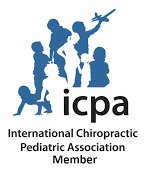What Is Scoliosis?
The Scoliosis Reduction Center indicates up to seven million Americans have scoliosis. Scoliosis is a spinal condition affecting 2 to 3 percent of the population. This condition refers to a spine that is curved abnormally to the side. To diagnose a patient with scoliosis, a measurement called a Cobb angle is used to draw intersecting lines from the tops and bottoms of the most uneven vertebrae of the curvature. This angle is measured in degrees and uses a scale to determine the severity of the condition. A patient must have a minimum Cobb angle measurement of 10 degrees to be diagnosed with scoliosis. There may not be a cure, but chiropractic can help people better manage their pain, discomfort, and any health issues related to their condition. Now that you know what scoliosis is, let’s take a look at how chiropractic can help patients with scoliosis.
Common Scoliosis Symptoms
Like any condition, the symptoms and severity of scoliosis vary for everyone. Around 90 percent of those with scoliosis have a spine curvature that isn’t severe enough to require surgery. However, this group experiences significant pain due to how this condition affects the body’s anatomy. In severe cases, a patient’s spine will rotate from front to back and cause a side-to-side curve. This can make the rib cage appear more prominent than the other.
Common Symptoms include:
- Clothes appear to hang unevenly
- Chronic back pain
- Chronic muscle spasms
- Difficulty breathing
- Uneven hips, shoulders, or waist
How Chiropractors Help Patients with Scoliosis
Chiropractors are highly trained at identifying and addressing scoliosis. These health experts perform gentle, safe adjustments to reduce pain, discomfort, and other health issues related to a patient’s condition. This holistic care is drug-free, non-invasive, and safe at reducing any pressure placed on the patient’s nervous system and strengthening the patient’s body. Indeed, chiropractors can improve the patient’s spine alignment, posture, and overall quality of life.
For scoliosis patients, the spine is in an unnatural position. This may cause muscle strain and pain in the back, neck, shoulders, and hips. Luckily, a chiropractic adjustment can reduce this muscle strain, thus increasing the blood flow to those sore muscles and reducing any pain and inflammation. Unlike preventive care, it’s recommended that patients receive routine chiropractic adjustments to maximize the benefits for scoliosis patients.
The chiropractor will also recommend tips to:
- Exercise to reduce or remove pain
- Strengthen the body and provide better joint support
- Improve the ability to take deep breaths
- Stay active without worsening symptoms
Evaluation and Treatment Plan
When you have your first appointment, your chiropractor will meet with you, discuss your health goals, and create a customized treatment plan to address and treat your condition. The chiropractor will discuss your family and medical history, as well as conduct a physical examination. This appointment may include some manipulation of the spine and neck to determine your range of motion. If necessary, the chiropractor will request your medical records from your doctor regarding your diagnosis. The chiropractor will also ask about your scoliosis symptoms and how it impacts your everyday life. Based on this vital information, the chiropractor will develop a treatment plan that includes what techniques will be used, how often you will receive adjustments, and exercises to do at home. Your chiropractor will reference this plan to measure your progress and adjust it as needed.
Personalized Treatment
Depending on the severity and symptoms of your condition, your chiropractor may recommend that you receive a few adjustments per week. This may be required to help your spine slowly adjust to the new positions from chiropractic care. Your chiropractor may also recommend some at-home exercises, physical therapy, and doctor visits. This will help ensure your treatment plan is working well and is helping you better manage your scoliosis.
Maintenance
As you start to feel better and find it easier to function in daily life, your chiropractor may suggest you transition to maintenance care. This is when you only receive occasional adjustments, such as once or twice a month. Depending on your budget and lifestyle, this can be either scheduled or as needed. Indeed, maintenance care will help you maintain a healthy spine alignment, reduce your pain, and help you better manage your condition on a long-term basis.
Contact Keystone Chiropractic Today
We hope you found this week’s article helpful as you consider the best treatment options for your condition. Scoliosis may not have a cure, but that doesn’t mean you have to live in pain. Contact Keystone Chiropractic, the best chiropractors in Plano, TX. We would love to help you gain victory over your health and achieve lasting health and wellness. We look forward to meeting you soon!





